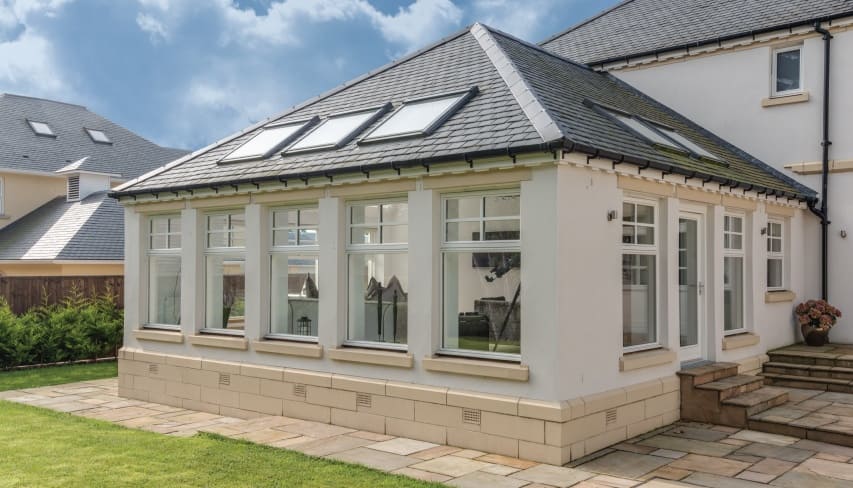In the world of modern architecture, the roof is more than just a shelter—it is a statement of style and functionality. The right roofing style can enhance the aesthetic appeal of a home, improve energy efficiency, and even increase property value. As contemporary designs continue to evolve, homeowners and architects alike are exploring diverse roofing options that blend innovative technology with timeless beauty. In this article, we delve into the top 10 roofing styles that are defining modern homes today, offering a blend of practicality and visual appeal.
1. Flat Roofs
Flat roofs are a hallmark of modern design, known for their sleek and minimalist appearance. These roofs, despite their name, have a slight pitch to allow for water drainage. Their simplicity provides a clean, unbroken line that complements contemporary architectural styles. Flat roofs are also highly functional, often used for rooftop gardens, terraces, or solar panel installations. This adaptability makes them a popular choice in urban environments where maximizing space is crucial.
2. Gable Roofs
Gable roofs are one of the most traditional roofing styles but have been reimagined in modern architecture. Characterized by their triangular shape, gable roofs efficiently shed water and snow, making them ideal for regions with heavy precipitation. Modern gable roofs often feature variations such as asymmetrical designs or the incorporation of large windows to enhance natural light. This blend of classic and contemporary elements makes gable roofs a versatile choice for modern homes.
3. Butterfly Roofs
The butterfly roof, named for its V-shape that resembles a butterfly’s wings, is a striking and unique choice for modern homes. This design not only offers a futuristic look but also serves practical purposes. The inward slope of the roof directs rainwater to a central point, making it ideal for water collection systems. Butterfly roofs also provide excellent opportunities for large windows and increased ventilation, creating bright and airy living spaces.
4. Shed Roofs
Shed roofs, also known as skillion roofs, are characterized by a single, sloping surface. This simple design is highly effective in shedding water and snow while providing a modern, angular aesthetic. Shed roofs are often used in combination with other roofing styles to create dynamic and visually interesting structures. Their steep pitch allows for high ceilings and loft spaces, making them a popular choice for contemporary homes that prioritize open, airy interiors.
5. Hip Roofs
Hip roofs feature slopes on all four sides, converging at a ridge. This design is not only visually appealing but also highly stable and wind-resistant, making it suitable for areas prone to strong winds and hurricanes. Modern hip roofs often incorporate variations such as cross-hipped or half-hipped designs to add complexity and interest. The ability to incorporate dormers and other architectural features further enhances their adaptability to modern aesthetics.
6. Mansard Roofs
Mansard roofs, with their dual slopes on each side, offer a blend of traditional elegance and modern functionality. The lower slope is typically steeper than the upper, creating additional living or storage space under the roof. This design is particularly advantageous in urban areas where maximizing interior space is a priority. Mansard roofs also provide a distinctive profile that adds character and sophistication to modern homes.
7. Green Roofs
Green roofs, or living roofs, are an eco-friendly option that integrates vegetation into the roofing system. This innovative approach offers numerous environmental benefits, including improved insulation, reduced urban heat island effect, and enhanced biodiversity. Green roofs are increasingly popular in modern architecture for their aesthetic appeal and sustainability. They transform rooftops into green spaces, creating a natural oasis in urban settings and promoting a healthier living environment.
8. Curved Roofs
Curved roofs are a bold and dynamic choice that breaks away from traditional straight lines. This design can range from gentle arches to dramatic curves, adding a sense of movement and fluidity to the structure. Curved roofs are not only visually striking but also highly functional, providing excellent wind resistance and allowing for creative interior spaces. Their ability to seamlessly blend with the natural landscape makes them a popular choice for modern homes seeking harmony with their surroundings.
9. Gambrel Roofs
Gambrel roofs, often associated with barns and colonial homes, have been adapted for modern architecture with striking results. This design features two different slopes on each side—the lower slope is steeper, while the upper slope is more shallow. This configuration provides ample attic space, which can be utilized for additional living areas or storage. Modern interpretations of gambrel roofs often incorporate large windows and contemporary materials, merging classic charm with modern sensibilities.
10. Combination Roofs
Combination roofs integrate multiple roofing styles to create a unique and multifaceted design. This approach allows for greater flexibility in architectural expression and functionality. For instance, a home may feature a mix of flat and gable roofs to define different sections of the structure, creating visual interest and dynamic spaces. Combination roofs are particularly popular in custom-built modern homes, where personalized design and innovation are paramount.
Conclusion
The roof of a modern home is more than a protective cover—it is a canvas for architectural creativity and innovation. From the minimalist elegance of flat roofs to the eco-friendly allure of green roofs, the variety of roofing styles available today allows homeowners to express their personal style while enhancing the functionality and sustainability of their homes. As architectural trends continue to evolve, these top 10 roofing styles offer a glimpse into the future of home design, where beauty, efficiency, and environmental consciousness converge to create living spaces that are both stunning and sustainable.


